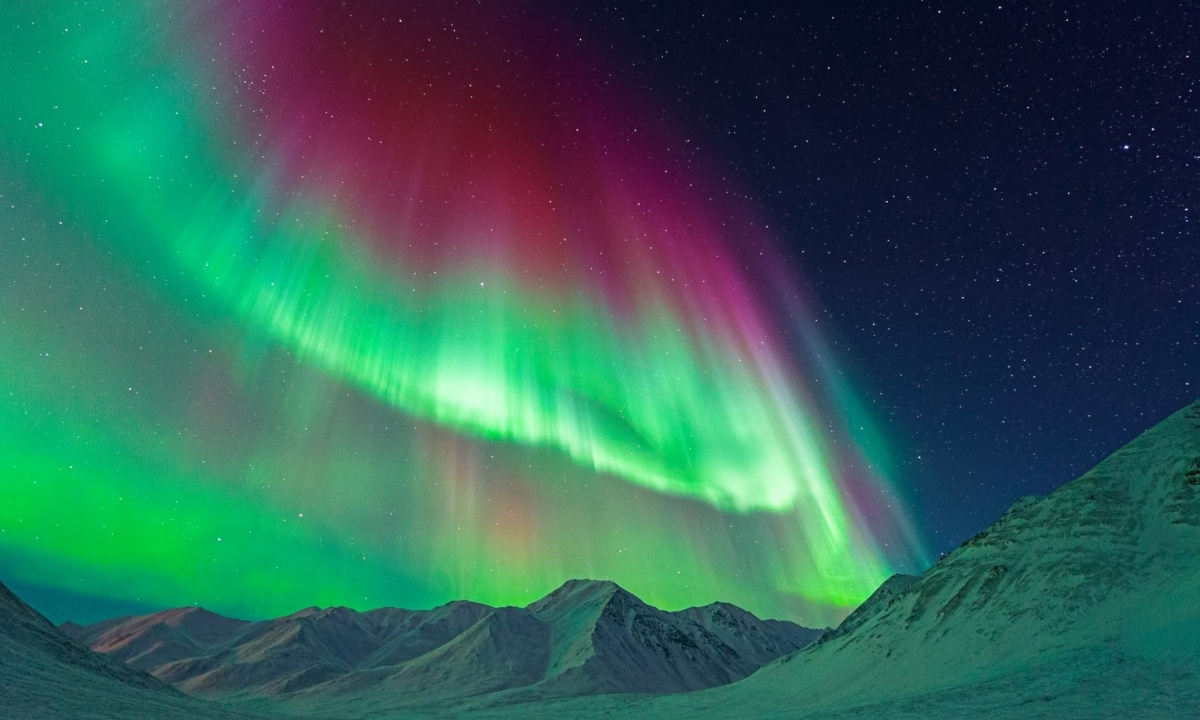
Have you ever wondered what makes the Northern Lights so mesmerizing? These dazzling displays, also known as the Aurora Borealis, light up the night sky with vibrant colors. But what exactly causes this natural phenomenon? The Northern Lights occur when charged particles from the sun collide with Earth's atmosphere. This collision creates stunning light shows that can be seen in polar regions. Did you know that the best time to see the Northern Lights is during the winter months? The long, dark nights provide the perfect backdrop for these luminous displays. Keep reading to uncover 12 fascinating facts about the Northern Lights tonight!
What Are the Northern Lights?
The Northern Lights, also known as the Aurora Borealis, are one of nature's most spectacular light shows. These colorful displays are caused by particles from the sun colliding with Earth's atmosphere. Here are some fascinating facts about this mesmerizing phenomenon.
-
The name "Aurora Borealis" comes from Roman mythology. Aurora was the goddess of dawn, and Boreas was the god of the north wind.
-
The Northern Lights are most commonly seen in the polar regions, particularly in countries like Norway, Sweden, Finland, and Canada.
-
The colors of the Northern Lights can vary. Green is the most common color, but they can also appear in shades of red, yellow, blue, and violet.
When and Where to See Them
Timing and location are crucial for witnessing the Northern Lights. Here are some key points to consider if you want to catch this natural wonder.
-
The best time to see the Northern Lights is during the winter months, from late September to early April. The long, dark nights provide optimal viewing conditions.
-
Clear skies are essential. Cloud cover can obscure the lights, so it's best to check the weather forecast before planning your trip.
-
The Northern Lights are more active during periods of high solar activity. Solar storms can enhance the intensity and frequency of the displays.
How Do They Form?
Understanding the science behind the Northern Lights can make the experience even more awe-inspiring. Here's a brief explanation of how they form.
-
The sun emits a stream of charged particles known as the solar wind. When these particles reach Earth, they interact with the planet's magnetic field.
-
The Earth's magnetic field directs these particles toward the polar regions. As they collide with gases in the atmosphere, they produce the vibrant colors of the Northern Lights.
-
Different gases produce different colors. Oxygen emits green and red light, while nitrogen produces blue and purple hues.
Fun Facts About the Northern Lights
Beyond their beauty, the Northern Lights have some intriguing aspects that might surprise you. Here are a few fun facts.
-
The Northern Lights can make sounds. Some observers have reported hearing faint crackling or rustling noises during particularly intense displays.
-
The Southern Hemisphere has its own version of the Northern Lights, known as the Aurora Australis or Southern Lights. They are visible in places like Antarctica, New Zealand, and Australia.
-
The Northern Lights have inspired countless myths and legends. Indigenous cultures in the Arctic regions have various stories explaining the phenomenon, often attributing it to spirits or ancestors.
The Northern Lights are a breathtaking natural wonder that captivates anyone lucky enough to witness them. Whether you're a seasoned traveler or a curious observer, these facts can enhance your appreciation of this celestial spectacle.
The Magic of Northern Lights
Northern Lights, or Aurora Borealis, are a breathtaking natural phenomenon. They occur when charged particles from the sun collide with Earth's atmosphere, creating stunning light displays. Best viewed in places like Norway, Iceland, and Canada, these lights can appear in various colors, including green, pink, and purple. The best time to see them is during the winter months when the nights are longest.
To increase your chances of witnessing this spectacle, check the aurora forecast and head to areas with minimal light pollution. Remember, patience is key. Sometimes, the lights can be elusive, but when they do appear, it's a sight you'll never forget.
Whether you're a seasoned traveler or a curious soul, seeing the Northern Lights should be on your bucket list. It's a reminder of nature's incredible beauty and the wonders our world has to offer.
Was this page helpful?
Our commitment to delivering trustworthy and engaging content is at the heart of what we do. Each fact on our site is contributed by real users like you, bringing a wealth of diverse insights and information. To ensure the highest standards of accuracy and reliability, our dedicated editors meticulously review each submission. This process guarantees that the facts we share are not only fascinating but also credible. Trust in our commitment to quality and authenticity as you explore and learn with us.
